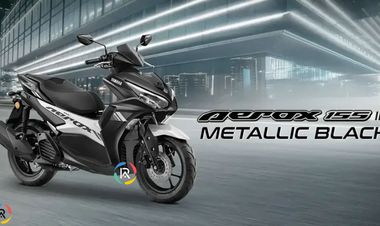National- In a significant stride toward improving road safety, the Ministry of Road Transport and Highways (MoRTH) has mandated the installation of Anti-lock Braking System (ABS) on all two-wheelers manufactured in India from January 1, 2026. The new regulation applies irrespective of engine capacity, marking a landmark shift in the country’s approach to vehicular safety.
The Anti-lock Braking System is a critical safety feature that prevents the wheels from locking up during sudden or hard braking. Wheel lock-ups can lead to skidding, especially on wet or uneven roads, often resulting in accidents. ABS works by maintaining wheel traction and vehicle control, enabling the rider to steer while braking, thus reducing stopping distance and enhancing stability.
This technology is particularly valuable in emergency situations and significantly reduces the risk of crashes by helping the rider maintain control.
This regulatory step aligns with the government’s broader mission to reduce road accidents and fatalities. India has one of the highest numbers of road deaths globally, with two-wheelers accounting for a large share of casualties. Many such accidents are linked to brake failure or improper braking techniques, especially among users of lower-capacity motorcycles, scooters, and mopeds.
Until now, ABS was required only for two-wheelers with engine capacities above 125cc. The new rule extends this crucial safety feature to all segments, including small-capacity two-wheelers that dominate the Indian market, particularly in rural and semi-urban areas.
Alongside the ABS mandate, the Ministry has also stipulated that two Bureau of Indian Standards (BIS)-certified helmets must be provided with every new two-wheeler at the time of purchase. This measure reinforces the need for high-quality, protective headgear and is expected to reduce head injuries and fatalities caused by substandard or non-use of helmets.
The move addresses both technological and behavioral aspects of road safety — making sure the vehicle is equipped with safety features and the rider is also adequately protected.
The two-wheeler industry is expected to upgrade product lines across all segments to integrate ABS technology. While high-end models already feature ABS, entry-level and mid-range models will now require engineering adjustments. Though this will marginally increase production costs, the safety benefits outweigh the financial implications, according to experts.
Manufacturers are also likely to collaborate with the government on consumer awareness campaigns to educate riders about the advantages of ABS and proper braking techniques.
The ABS mandate marks a transformative moment in India's road safety framework. As the number of two-wheelers continues to surge across the country, such policies are vital to ensure that road safety keeps pace. By standardizing ABS and promoting helmet use, the government is sending a clear message — rider safety is non-negotiable.
With implementation set for January 2026, the onus is now on manufacturers, dealers, and consumers to embrace this change. If adopted effectively, this initiative could be a game-changer in reducing two-wheeler-related accidents and fatalities, paving the way for safer journeys on Indian roads.







